Barbus denisoni: description, tips for care and breeding
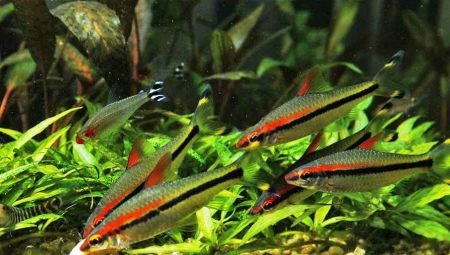
Observing the measured life of aquatic inhabitants in an artificial reservoir not only calms the nervous system, but also helps to relieve the emotional and psychological stress that every modern inhabitant of large cities has. It is thanks to this feature that aquariums of different sizes can be found not only in private apartments, but also in offices, medical and educational institutions. But in order for a water body to become a highlight of any interior, it is necessary to apply the maximum amount of effort to equip it. In specialized stores, you can purchase a wide range of necessary goods, including ornamental fish. The choice of the inhabitants of the aquarium should be based not only on the beauty of the fish, but also taking into account the way of caring for them, so that the maintenance of the selected species does not become an overwhelming burden for novice aquarists. One of the hardest fish to care for is the denisoni barb.

Description
Denisoni barbus is an aquarium fish species that belongs to the Karpov family. Due to its high speed of movement, the barb is often called a red torpedo or comet. The homeland of the aquatic inhabitant is India. This species prefers reservoirs with a high oxygen content, which have a rocky bottom and thickets of aquatic plants. The peak of activity of the barbus is in the evening or at night, but during the daytime the fish prefer to rest. The life span of this species in artificial reservoirs does not exceed 5 years.
The long body of the fish has a pointed shape and an elongated muzzle. The color scheme of the skin is gray-bronze with a shiny sheen, and the back has an olive tint. An external distinctive feature is the presence of black and red stripes on the sides, which run strictly in the center. However, individuals with golden scales only have a red line on their body. The tail area is decorated with black and yellow spots. The dorsal fin has a beautiful red border. The maximum body size is 15 cm.
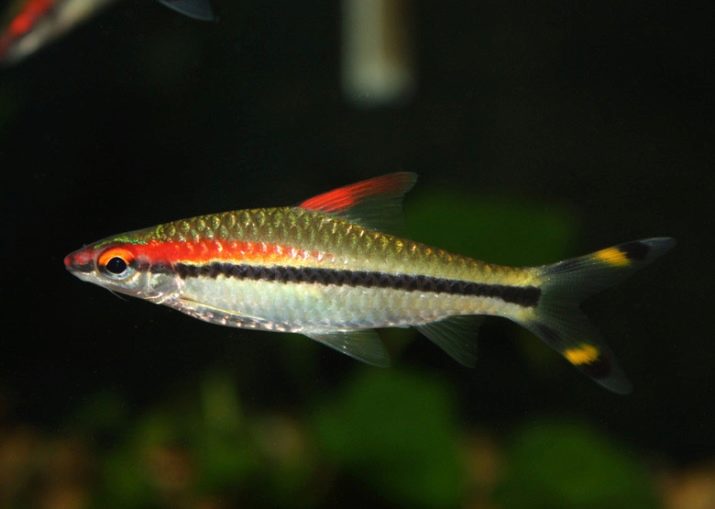
The distinctive characteristics of females are as follows:
- round belly;
- discreet colors;
- large size.
The main features of males are manifested in the following:
- flat and elongated belly;
- bright and rich color;
- small size.
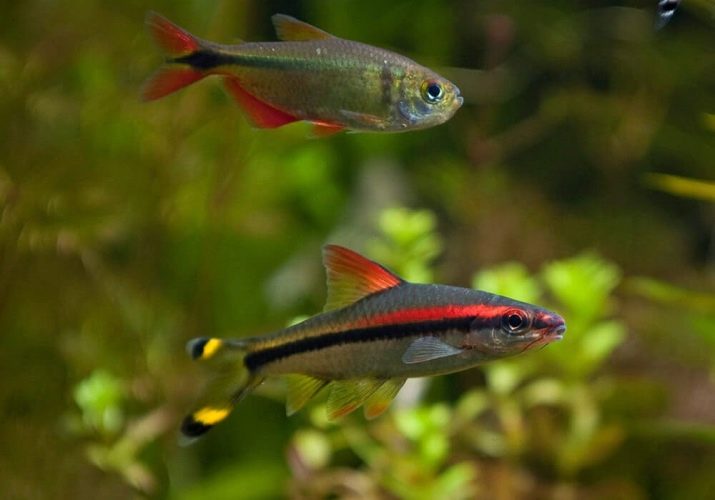
In adults, when they reach puberty, green whiskers begin to form, which serve to search for food. Denisoni barbus has a calm, peaceful and balanced character, but towards small fish it can show a small amount of aggression. To avoid conflict situations, experts recommend choosing the same or much larger fish as neighbors. Shy and fearful fish do not tolerate loneliness and prefer to be in a company, which should consist of at least 10 individuals.
Important! Due to the increased popularity and difficulty of reproduction, this species is on the verge of extinction. The local authorities of the regions where the barbus is found in natural reservoirs has introduced a ban on its catch and are trying to create the most comfortable conditions for increasing the number of livestock.
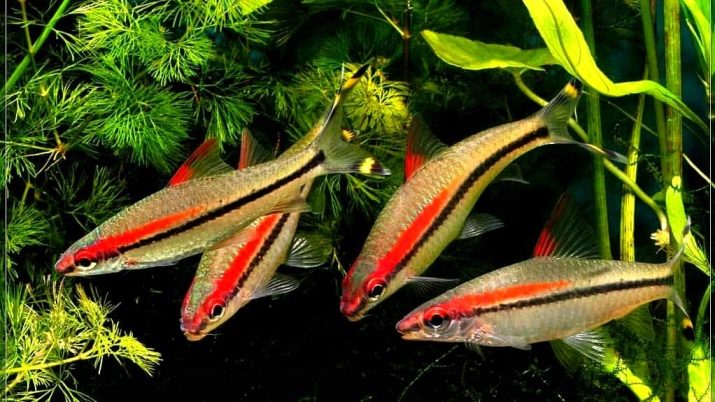
Care and maintenance
Denisoni barbus is a very demanding aquatic inhabitant, the care and maintenance of which can cause a number of difficulties for novice aquarists. Throughout the entire growing period of this species, it is necessary to strictly observe all norms for its maintenance, carefully monitor the cleanliness of the reservoir and change the water in it in a timely manner. To minimize stressful situations, it is necessary for the fish to make artificial shelters., which can be vegetation, driftwood, artificial caves and castles. For a flock of 10 individuals to live comfortably, it is necessary to purchase a container with a volume of at least 200 liters and preferably a rectangular shape. To prevent frightened and panicked fish from jumping out, cover the aquarium with a special lid or any similar object.
The temperature level of the water should be in the range from +22 to +24 degrees. The acidity of the water should be neutral, and the level of hardness should be no more than 11 units. When choosing plants for landscaping, it is necessary to give preference to those species that have a developed and strong root system, as well as thick and wide leaves. Only such algae can create a reliable shelter for fish and not die after their digging. Among the huge number of algae species, experts recommend paying attention to elodea, hornworm, cryptocoryne, anubias, vallisneria, microorum, and pinnate. Artificial green spaces can serve as a good analogue to living plants.
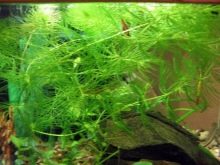
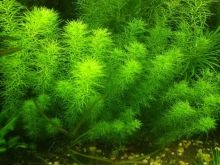
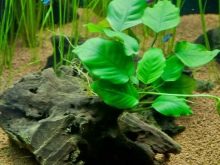
As a substrate for an aquarium, you can use coarse river sand, fine pebbles or a commercial substrate with a neutral acidity level. Demanding fish with a high level of sensitivity to contaminated water require constant aeration and filtration. Light level is one of the minor parameters that only affects the appearance of the aquarium. Beautiful and nimble fish look very elegant and attractive in direct natural or artificial light. To prevent negative consequences, it is necessary to carefully consider the content of nitrates and nitrites in the water, an excessive amount of which can provoke the death of the flock.
Failure to comply with the rules of care and maintenance can provoke the appearance of the following diseases:
- white skin;
- aeromonosis;
- branchiomycosis;
- endoparasites;
- ectoparasites.

Compatibility
To prevent the emergence of conflict situations and the death of the inhabitants of the reservoir, novice aquarists should carefully approach not only the selection of an aquarium and plants, but also the choice of neighbors. This species cannot live in peace and harmony with all aquatic inhabitants. Denisoni barbus has the greatest compatibility with neons, puntius, corridors, tetras, barrilius, Sumatran babbuses and garra.
Experts do not recommend keeping this species in the same body of water with swordtails, guppies, platies, cichlids, discus and shrimps.
Feeding
All representatives of the Carp family are omnivorous fish that can feed on larvae, small insects, aquatic plants, crustaceans and molluscs. Denisoni barb is no exception, which at home can eat live, dry and frozen food. The proportional ratio of live and plant foods should be equal. Live food for this fish can be daphnia, brine shrimp, bloodworms, earthworms and tubifex. The most favorite herbal products are the following:
- lettuce leaves;
- dandelion leaves;
- zucchini;
- cucumbers;
- carrot;
- apples;
- pears.

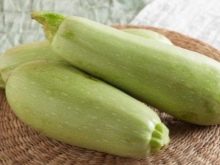
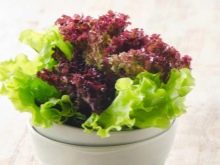
Professional aquarists recommend feeding pets with a variety of foods that will help not only prolong their life and avoid dangerous diseases, but also make their color range even richer and more beautiful. Excessive feeding can provoke metabolic disorders, decreased activity, and sometimes death of pets.
Reproduction
The likelihood of getting fry at home is very low and unlikely. The offspring from this type of fish can be obtained only in specialized nurseries with the help of hormonal preparations or caught in natural reservoirs. If, nevertheless, there is a great desire to independently engage in breeding this type of fish, then the following requirements must be observed:
- water temperature - not less than +26 degrees;
- acidity level - not higher than 5.6;
- obligatory presence of Japanese moss for spawning.
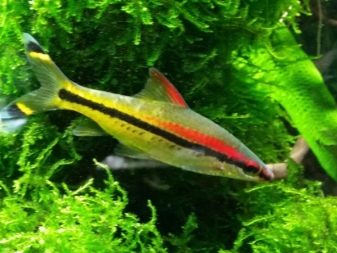

The readiness for reproduction of offspring will be indicated by the color of the fish, which will acquire a blue tint. In no case should a couple be separated from the general flock. This manipulation can provoke stress and interfere with the fertilization process.
The first food for newborn fry is ciliates. To prevent the death of offspring, you must carefully monitor the temperature regime and the purity of the water. After the babies begin to grow, they must be seated in different containers in accordance with the size. As soon as babies reach a size of 10 mm, they can be safely transferred to an adult diet. During this period of time, the fry change color and acquire all the characteristic color features of adult fish.
The appearance of a water body in a house always brings joy not only to young family members, but also to adults, who can watch the life of its inhabitants for hours. But behind the initial euphoria, one should not forget about caring for the aquarium, as well as creating the most comfortable conditions for the life and reproduction of all its inhabitants.
Particular attention should be paid to the most capricious and demanding pets, caring for which will require attention, patience, time and financial costs.
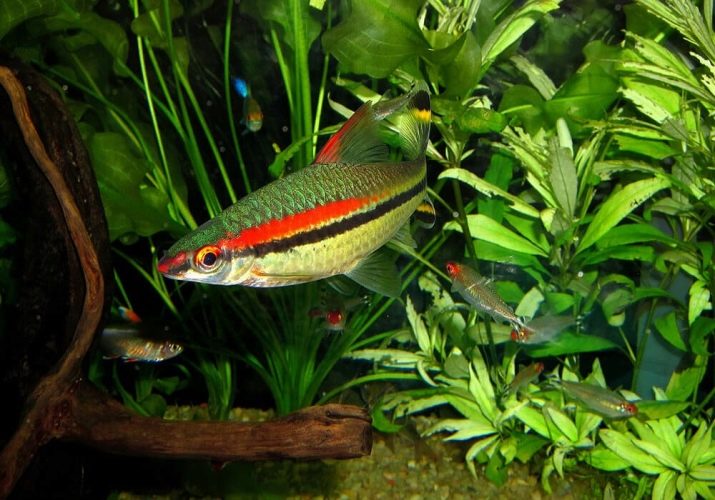
For breeding denisoni barbs, see the next video.








